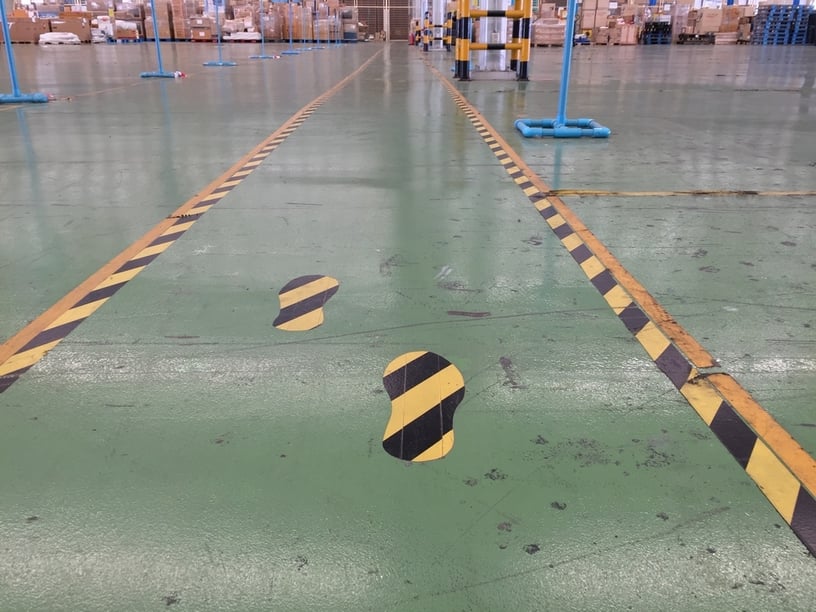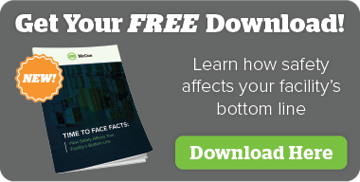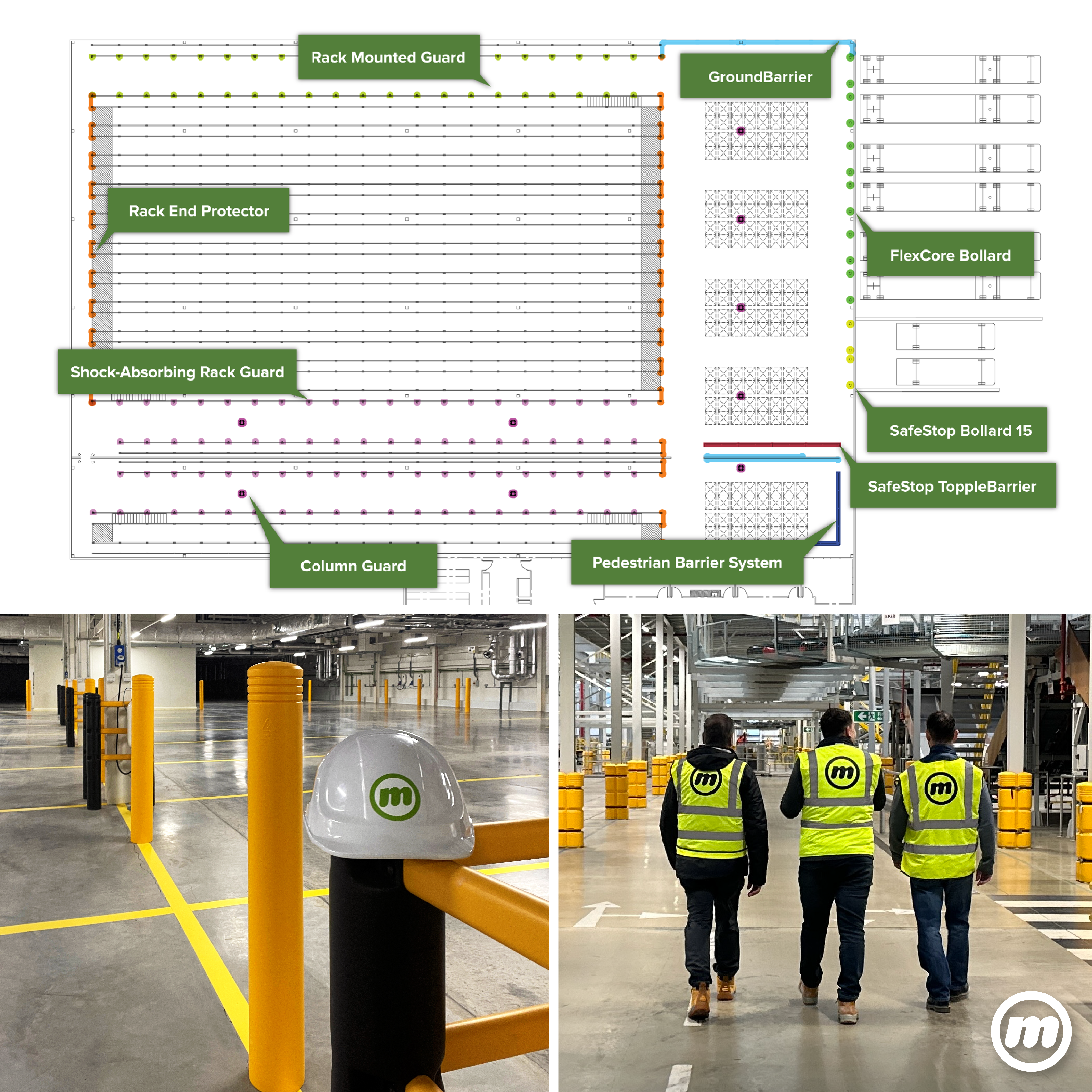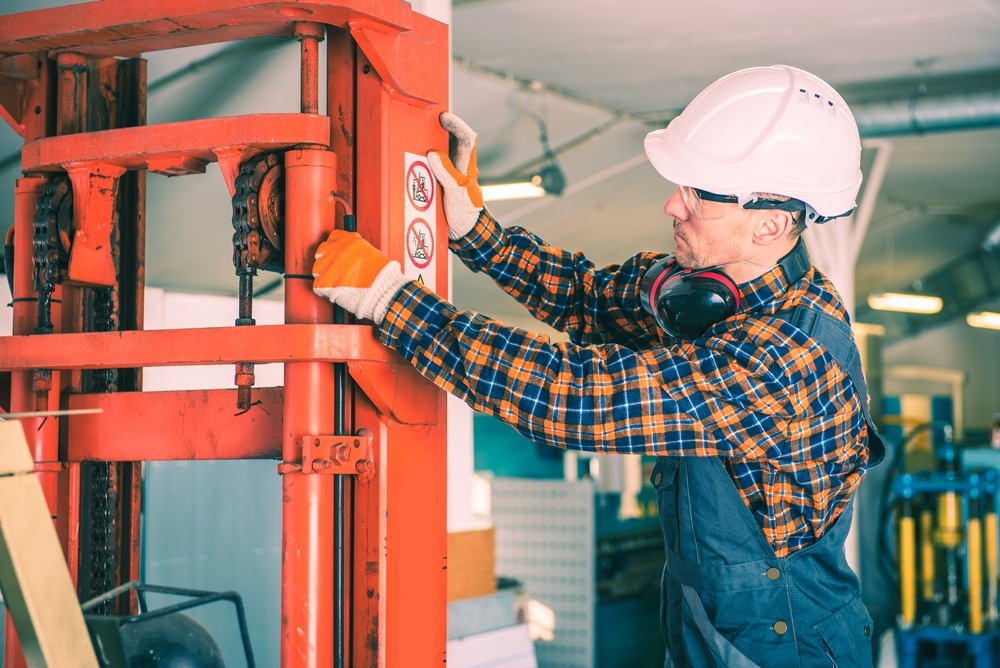Improving safety at your facility can often seem to be at odds with managing efficiency and keeping up with distribution volume. When all of the various moving pieces start to turn a little faster, it stands to reason that employee safety inherently becomes an even greater concern. But it doesn't have to be that way! Here are a few injury prevention practices you can use to protect employees and assets in your facility, without sacrificing efficiency.
 Provide Proper Training
Provide Proper Training
The first choice for improving safety — proper training — is often the one to get left by the wayside in a busy facility. By providing relevant information, documentation, procedures and continued supervision for your employees, you can begin to foster a more productive and safe workplace for all. If employees fully understand the risks they face in their day-to-day activities, they’re far more likely to understand why certain techniques or safety solutions are in place and will then work with those solutions, rather than against them.
Realistic Timeframes
As work is pushed to get out quickly and all related processes start to move at a faster pace, strict adherence to safety protocols tends to take a back seat for the sake of efficiency. But with genuine leadership from management, along with a realistic timeframe for each task to be complete, you can ensure that all tasks are finished on time before extra orders come in.
Along with this, it’s important that managers are as fully aware of the risk and injury potential facing their team as the employees are themselves. A risk assessment for each area needs to be performed by managers, to see what safety solutions need to be in place. Once you’ve identified the risks, you can manage them much better going forward.
Segregation of Pedestrians and Vehicle Movement
Often the biggest risks facing a facility occur in the areas where pedestrians and vehicles meet. Suitable action should be taken to segregate employees and vehicles if possible, but it’s very rare that you can fully limit these parties from crossing paths at one point or another. If it’s impossible to avoid humans meeting vehicles, then implementing a suitable barrier system (including gates and visible crossing points) will ensure that when pedestrians and vehicles meet one another they’re both aware of the hazard.
The introduction of gates is especially important. We visit many sites that have barrier systems, but they simply have openings where gates should be. Humans will always look to take the quickest route and that can often mean going through an opening they shouldn’t be going through. Gates are imperative because they physically make people stop and should be included as a best practice for protection in your facility.
The Classics
Correct, visible, and well-placed signage should be required in every area. In today’s facilities, it’s especially important that this signage be multilingual to reflect your workforce. The use of vehicle movement procedures is also especially important. From using the horn when going around corners or blind spots to reducing forklift speed altogether, these measures will certainly reduce the number of accidents throughout your facility. And once the rest of your safety solutions are in place, personal protective equipment (PPE) can provide one final layer of injury protection for your employees.
As Safe as Necessary
We have a saying in the Health and Safety space — it doesn’t need to be as safe as possible, but as safe as necessary. Some facilities throw the kitchen sink at a facility when you might only need the tap. If your safety protection is doing its job at the moment, you’ve managed it well and at this point, you should look to identify any gaps that you can improve on going forward.
For example, we’ve visited a site that had implemented walkways with no access or crossing points. As the facility wanted to fully segregate vehicles from pedestrians, employees who had to move pallet loads by hand were forced to go in that walkway as well. This took these guys a lot longer to reach the areas they needed to reach. Had this not been in place, yes, these folks would have met vehicles but had gates and access points been properly implemented it would have been in a safe manner.
Health and Safety initiatives enable your team to feel safe in their job and perform to their highest potential. If you can create an environment that looks safe, employee morale will also be boosted. And that means productivity will quickly follow suit. Do you use any injury prevention techniques we didn't get to mention? Leave us a comment below!




